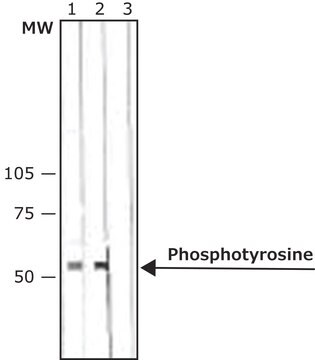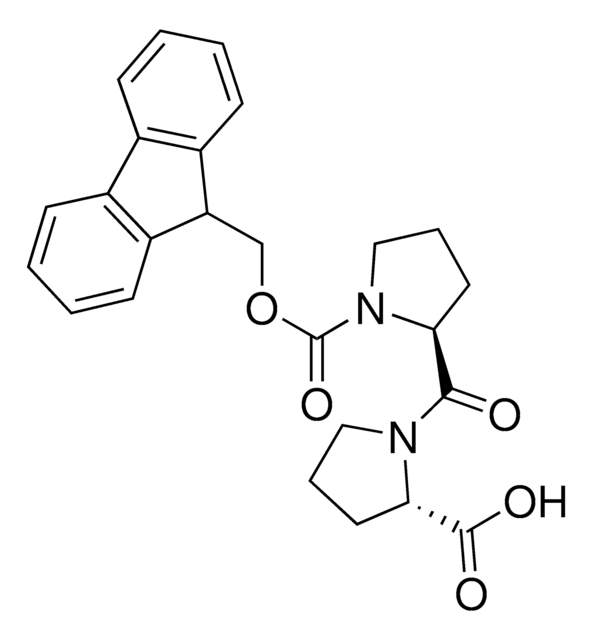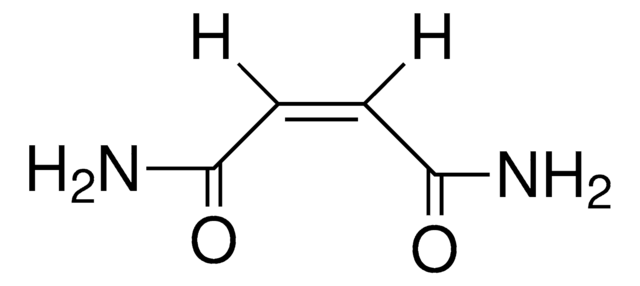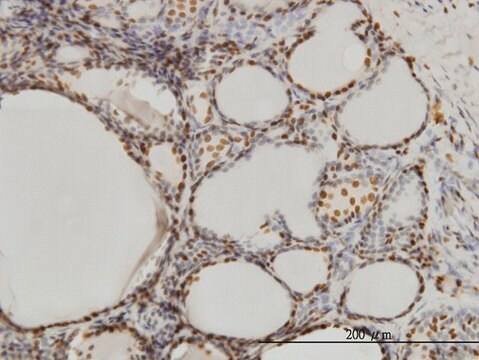P2860
Monoclonal Anti-PSF antibody produced in mouse
clone B92, purified from hybridoma cell culture
Synonym(e):
Mouse Anti-Polypyrimidine tract-binding protein-associated splicing factor
About This Item
Empfohlene Produkte
Biologische Quelle
mouse
Qualitätsniveau
Konjugat
unconjugated
Antikörperform
purified immunoglobulin
Antikörper-Produkttyp
primary antibodies
Klon
B92, monoclonal
Form
buffered aqueous solution
Speziesreaktivität
mouse, human
Verpackung
antibody small pack of 25 μL
Konzentration
~2 mg/mL
Methode(n)
immunocytochemistry: suitable
immunohistochemistry (frozen sections): suitable
immunoprecipitation (IP): suitable
microarray: suitable
radioimmunoassay: suitable using cells
western blot: 2-4 μg/mL using whole extract of cultured HeLa cells
Isotyp
IgG1
Lagertemp.
−20°C
Posttranslationale Modifikation Target
unmodified
Angaben zum Gen
human ... TAP1(6890)
Allgemeine Beschreibung
Immunogen
Anwendung
Immunofluorescence (1 paper)
Immunohistochemistry (1 paper)
Immunoprecipitation (1 paper)
- immunofluorescence
- immunohistochemistry
- immunoprecipitation
Biochem./physiol. Wirkung
Physikalische Form
Angaben zur Herstellung
Haftungsausschluss
Sie haben nicht das passende Produkt gefunden?
Probieren Sie unser Produkt-Auswahlhilfe. aus.
Lagerklassenschlüssel
12 - Non Combustible Liquids
WGK
nwg
Flammpunkt (°F)
Not applicable
Flammpunkt (°C)
Not applicable
Analysenzertifikate (COA)
Suchen Sie nach Analysenzertifikate (COA), indem Sie die Lot-/Chargennummer des Produkts eingeben. Lot- und Chargennummern sind auf dem Produktetikett hinter den Wörtern ‘Lot’ oder ‘Batch’ (Lot oder Charge) zu finden.
Besitzen Sie dieses Produkt bereits?
In der Dokumentenbibliothek finden Sie die Dokumentation zu den Produkten, die Sie kürzlich erworben haben.
Unser Team von Wissenschaftlern verfügt über Erfahrung in allen Forschungsbereichen einschließlich Life Science, Materialwissenschaften, chemischer Synthese, Chromatographie, Analytik und vielen mehr..
Setzen Sie sich mit dem technischen Dienst in Verbindung.








